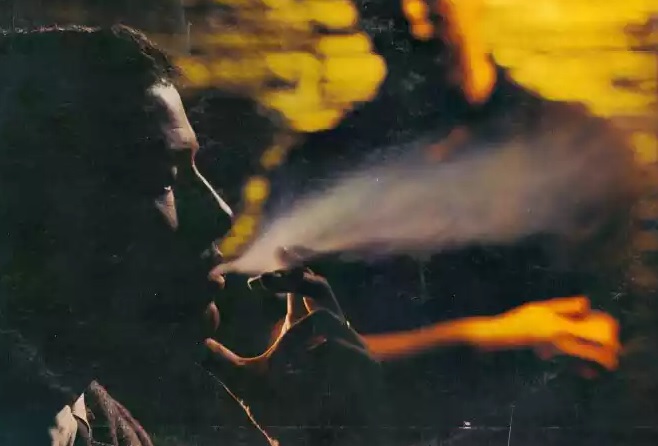
In the 1990s, the contemporary art scene was booming in Hanoi. New galleries opened, foreign art collectors took an interest in this relatively unknown country and, although censorship by a watchful regime did not disappear, Vietnamese artists gained some freedoms. Significant innovations included the appearance of performance art and of homosexual content in the artwork of Truong Tan, possibly the first openly gay Vietnamese visual artist.

Truong Tan’s first work showing homosexual content dates from 1992, when the painting Circus was displayed in a group show at the Hanoi Fine Arts University, where Tan was a lecturer. Truong Tan’s catalogue for his first solo exhibition in 1994 documents his tentative exploration of performance art and frequent use of ropes [see picture above]. The decision to show this work activated something in him. “My goal was set,” he said, explaining that he was ready to stop hiding his homosexuality and that he was determined to forge a career as a professional artist. It wasn’t easy, and for some time he kept his homoerotic drawings private. READ MORE




















 "After recent news stories reporting that Judge Vaughn Walker (pictured), the federal judge presiding over the Olson/Boies federal challenge to Prop 8’s ban on marriage of same-sex couples, is a gay man, some commentators have started calling for Judge Walker to recuse himself from the case. Whatever Judge Walker’s sexual orientation is, it’s not a reason to take him off the case," writes James Esseks, Director, ACLU Lesbian Gay Bisexual Transgender & AIDS Project. "Since there have not been many openly gay judges in any of our courts, we don’t have much law addressing this question directly. But it doesn’t take much thought to work through the issue in closely related contexts: Can an African-American or a female judge rule on a case about racial or gender bias in employment? The courts have answered that one, quite clearly and many times over: Of course she can."
"After recent news stories reporting that Judge Vaughn Walker (pictured), the federal judge presiding over the Olson/Boies federal challenge to Prop 8’s ban on marriage of same-sex couples, is a gay man, some commentators have started calling for Judge Walker to recuse himself from the case. Whatever Judge Walker’s sexual orientation is, it’s not a reason to take him off the case," writes James Esseks, Director, ACLU Lesbian Gay Bisexual Transgender & AIDS Project. "Since there have not been many openly gay judges in any of our courts, we don’t have much law addressing this question directly. But it doesn’t take much thought to work through the issue in closely related contexts: Can an African-American or a female judge rule on a case about racial or gender bias in employment? The courts have answered that one, quite clearly and many times over: Of course she can."
